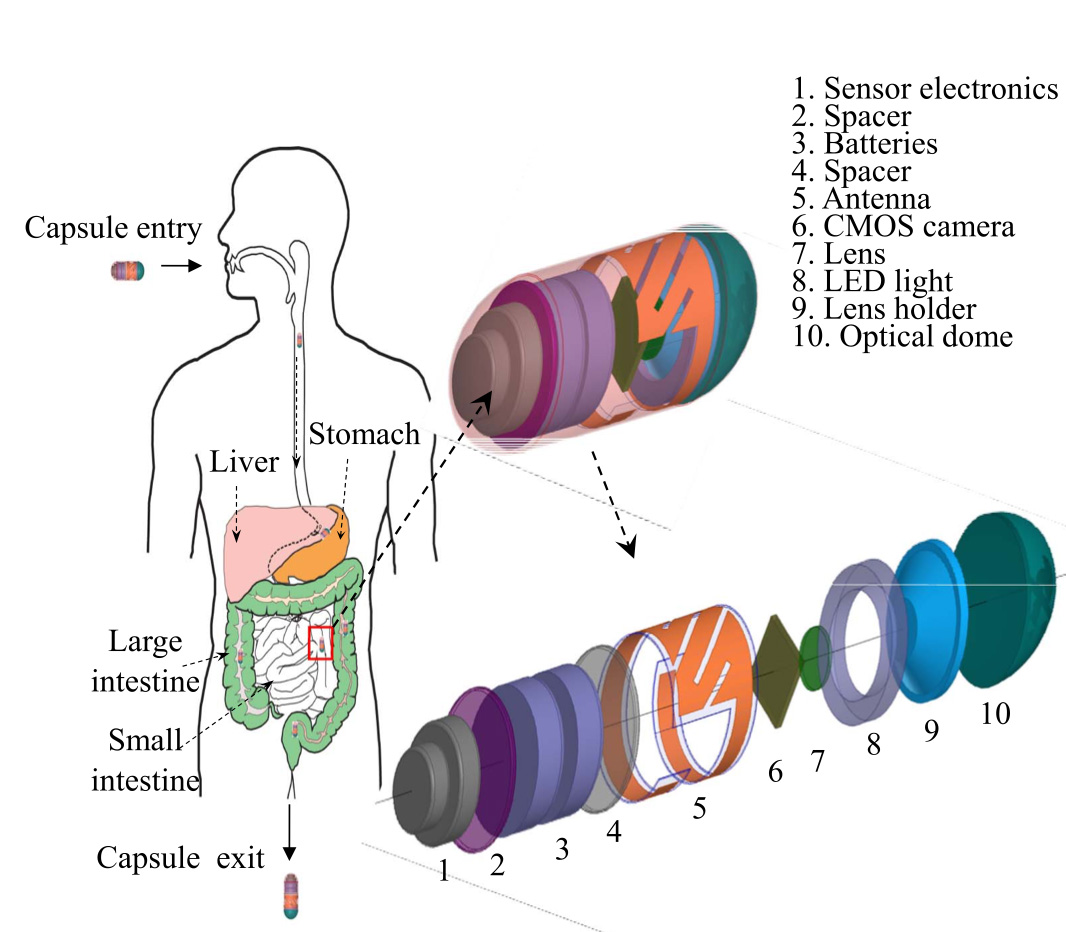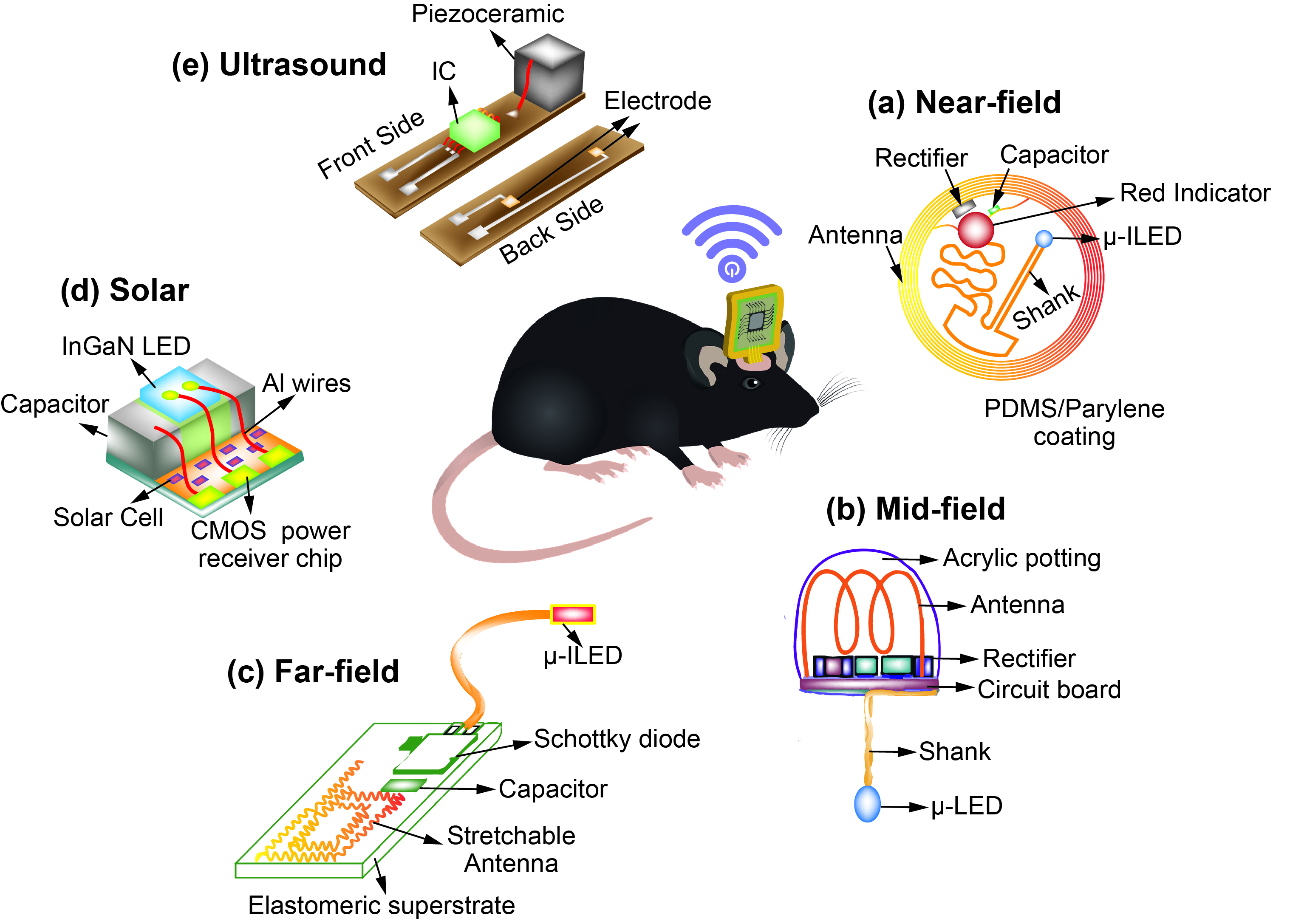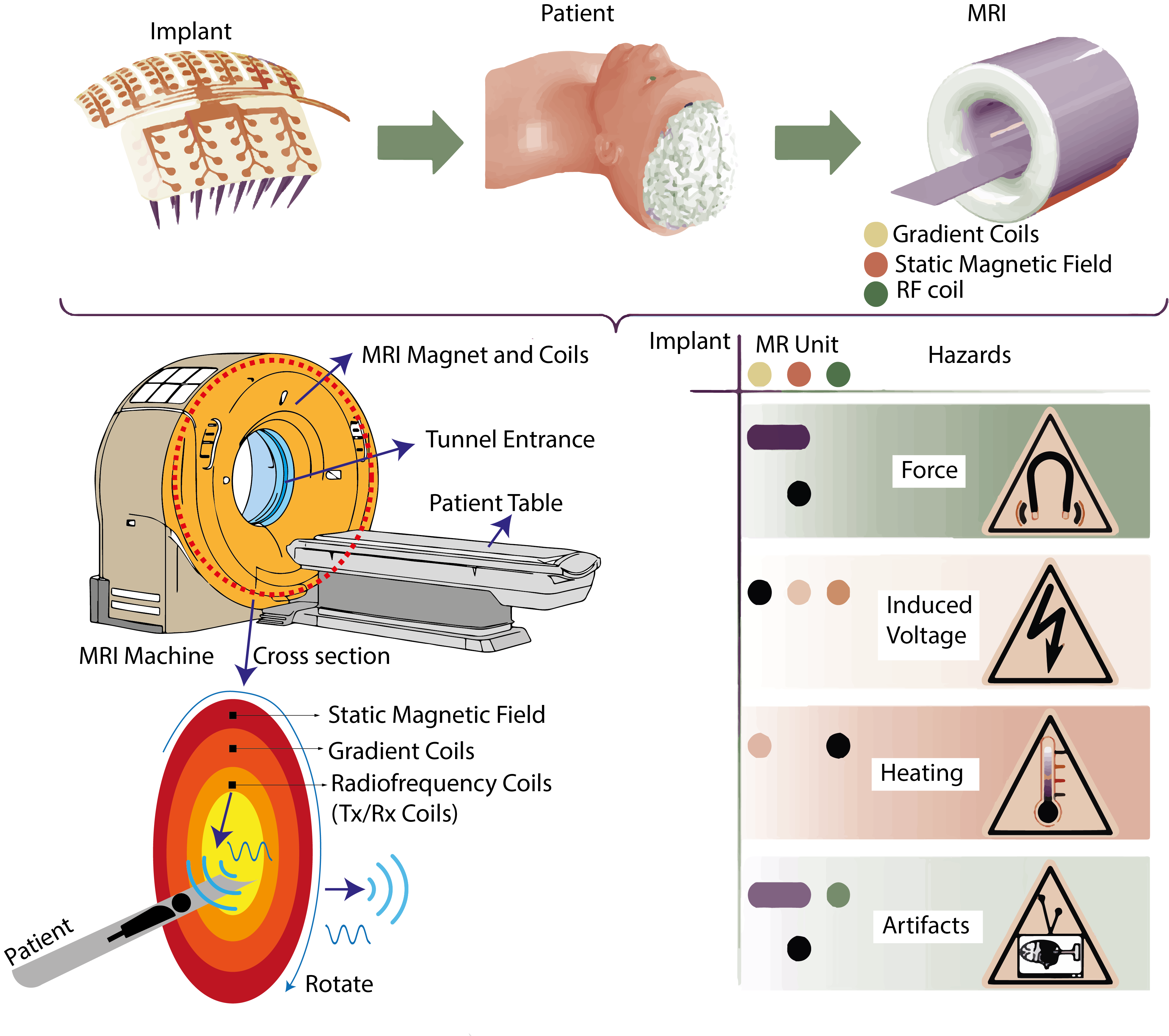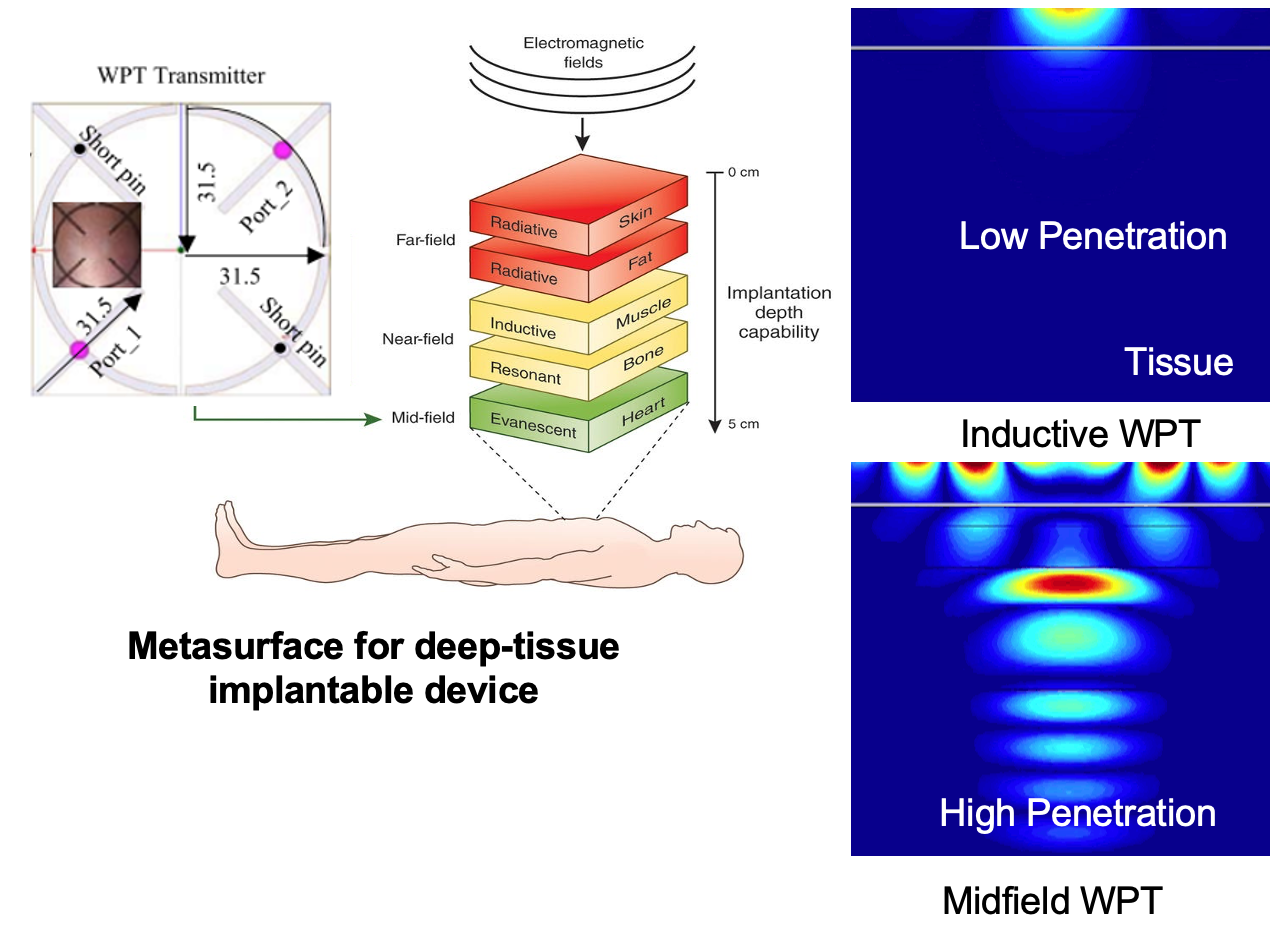- Homepage
- Key Information
- Students
- Staff
- PGR
- Health and Safety
- Computer Support
- National Student Survey (NSS)
- Intranet Help
Dr Rupam Das
Research areas
Are you interested in developing devices that can save human lives?
My research is multidisciplinary, at the interface of electronics, physics and biology. I am primarily focused on applying electromagnetic and electronic tools in the field of implantable, wearable devices and medical imaging. I am currently working on developing metamaterial based wireless neuromodulation systems and implantable neural probe for the treatment of brain diseases. Key research areas:
Capsule-type Bioelectronic Devices: With the progress in biomedical engineering, capsule-type implantable and ingestible medical devices (e.g. capsule endoscope) are turning out to be more prevalent in well-being and medicinal applications because of their capacity to locally empower inner organs and/or screen and impart internal key signs to remote receivers. With continuous demand from the clinical need for implantable devices comes the constant flow of specialized difficulties. Likewise, with commercial portable items, implantable devices have the same need to reduce size, weight, and power. As an example, the Nanostim leadless pacemaker is one-tenth the size of a conventional pacemaker and is considered one of the most significant advances in the history of pacemaker technology. Meanwhile, Medtronic also introduced the Micra transcatheter pacing system, which is 30% smaller than the Nanostim leadless pacemaker. However, there are still some challenges that need to be addressed. The aim of this research area will be to explore those challenges and develop newly wirelessly powered biomedical devices.
and ingestible medical devices (e.g. capsule endoscope) are turning out to be more prevalent in well-being and medicinal applications because of their capacity to locally empower inner organs and/or screen and impart internal key signs to remote receivers. With continuous demand from the clinical need for implantable devices comes the constant flow of specialized difficulties. Likewise, with commercial portable items, implantable devices have the same need to reduce size, weight, and power. As an example, the Nanostim leadless pacemaker is one-tenth the size of a conventional pacemaker and is considered one of the most significant advances in the history of pacemaker technology. Meanwhile, Medtronic also introduced the Micra transcatheter pacing system, which is 30% smaller than the Nanostim leadless pacemaker. However, there are still some challenges that need to be addressed. The aim of this research area will be to explore those challenges and develop newly wirelessly powered biomedical devices.
 Wireless, Flexible and Biontegrated Neuromodulation: Implantable neural interfacing devices have added significantly to neural engineering by introducing the low-frequency oscillations of small populations of neurons known as local field potential as well as high-frequency action potentials of individual neurons. Regardless of the astounding progression as of late, conventional neural modulating system is still incapable to achieve the desired chronic in vivo implantation. The real constraint emerges from mechanical and physical differences between implants and brain tissue that initiates an inflammatory reaction and glial scar formation that reduces the recording and stimulation quality. Furthermore, traditional strategiesconsisting of rigid and tethered neural devices cause substantial tissue damage and impede the natural behavior of an animal, thus hindering chronic in vivo measurements. Therefore, enabling fully implantable neural devices requires biocompatibility, wireless power/data capability, biointegration using thin and flexible electronics, and chronic recording properties. This reseach area will explore the biocompatibility and design approaches for developing biointegrated and wirelessly powered implantable neural devices in animals aimed at long-term neural interfacing.
Wireless, Flexible and Biontegrated Neuromodulation: Implantable neural interfacing devices have added significantly to neural engineering by introducing the low-frequency oscillations of small populations of neurons known as local field potential as well as high-frequency action potentials of individual neurons. Regardless of the astounding progression as of late, conventional neural modulating system is still incapable to achieve the desired chronic in vivo implantation. The real constraint emerges from mechanical and physical differences between implants and brain tissue that initiates an inflammatory reaction and glial scar formation that reduces the recording and stimulation quality. Furthermore, traditional strategiesconsisting of rigid and tethered neural devices cause substantial tissue damage and impede the natural behavior of an animal, thus hindering chronic in vivo measurements. Therefore, enabling fully implantable neural devices requires biocompatibility, wireless power/data capability, biointegration using thin and flexible electronics, and chronic recording properties. This reseach area will explore the biocompatibility and design approaches for developing biointegrated and wirelessly powered implantable neural devices in animals aimed at long-term neural interfacing.

MRI and Safety: Magnetic resonance imaging (MRI) has become a commonly accepted medical procedure with wide usage. Unlike conventional radiography and computed tomography, MRI has many advantages including its nonionizing nature and the ability to discriminate different soft tissues without contrast media. However, the substantial benefits of MRI are often not available to patients with implanted medical devices, such as a pacemaker, an implantable cardioverter device, or a deep brain stimulator. The goal of this research would be to study the interaction of different biomedical devices with MRI and improving the homogeneity of the magnetic field in high-field MRI using artificial materials such as metamaterials.

Metamaterials for Biomedical applications: Radiofrequency techniques are the dominant wireless technology used for bioelectronic applications due to their relative safety and maturity. These systems use components such as antennas, waveguides and phased arrays to control the propagation of electromagnetic fields, which are usually the largest and most energy-demanding part of a bioelectronic device and thus determine the safety and efficacy of the system. However, the human body is a lossy, heterogeneous and dispersive medium, presenting major challenges for wireless technologies. Biological tissues, in particular, absorb electromagnetic radiation, which must be within safety limits to prevent adverse thermal or stimulatory effects. Because tissue absorption increases with higher electromagnetic field frequencies, an operating frequency of less than 5 GHz is required to access regions deep in the body. However, this requirement also limits the miniaturization of the components and the ability to focus the electromagnetic field because the wavelength in biological tissues exceeds a centimetre at such frequencies. Furthermore, the human body is in constant motion and its size and composition greatly vary between individuals. These features present formidable challenges for the design of miniaturized, robust and high-performance wireless bioelectronic components for sensing and therapy. This research area explores and studies the metamaterials/metasurface, which can be engineered to control electromagnetic fields around the human body and could be used to overcome the current limitations of bioelectronic interfaces.
